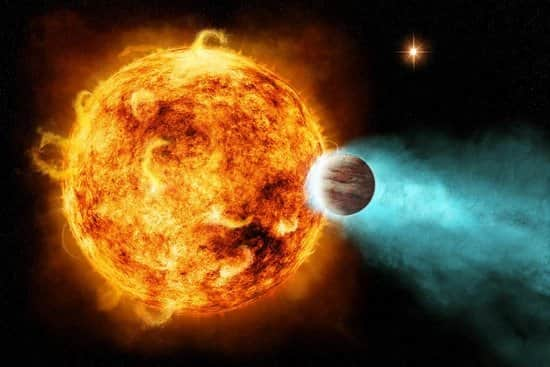Astronomers discover a giant helium tail evaporating from a Hot Jupiter atmosphere
and live on Freeview channel 276
Astronomers at the University of Texas have observed a rare and stunning phenomenon of a hot Jupiter, whose atmosphere is being stripped away by its host star. The planet, called HAT-P-32b, has one of the longest helium tails seen on an exoplanet so far.
HAT-P-32b, which is almost twice the size of Jupiter, is known as a puffball Hot Jupiter and its remarkable tail is around more than 50 times the radius of its planet. But what exactly is a hot Jupiter, what does it mean to have an atmosphere stripped away and what is the significance of this discovery?
Here is what you need to know.


What is a hot Jupiter?
Advertisement
Hide AdAdvertisement
Hide AdHot Jupiters are a class of gas giant exoplanets that are physically very similar to Jupiter but have very short orbital periods - which are less than 10 days. They get dubbed as Hot Jupiter due to their proximity to their stars and their high surface temperature.
These planets, which are also sometimes called hot Saturns, are usually detected via the radial-velocity method - which is a line of sight. HAT-P-32b is a puffball hot Jupiter - dubbed that as it is a special type of gas giant whose atmosphere has expanded due to the heat from the host star - such as seen in a hot air balloon.
With HAT-P-32b, observations have found a ‘tail’ of helium which stretched behind the planet, with the length of the tail around 50 times its radius. It is believed the tail was formed due to the closeness of HAT-P-32b to its star - where, by the radiation emitted via its host star, the atmosphere of HAT-P-32b expanded as some of the matter escaped from the gravitational embrace of HAT-P-32b and enters the orbit of its star.
What is the significance of this finding?
HAT-P-32b orbits a star which is around 950 light years away from Earth. The planet has a mass of 68% of Jupiter, with almost twice the radius, and passes at a distance of 0.033 AU (around 5 million km) from its star, which is why it has an atmosphere exceeding 1000C.
Advertisement
Hide AdAdvertisement
Hide AdA paper describing its findings has been published in Science Advances, and whilst tails on exoplanets are not rare, this is a unique observation as it indicates that previous observations may have underestimated the mass of exoplanets with tails.
“It is exciting to see how gigantic the extended tails are compared to the size of the planet and its host star,” said first author Zhoujian Zhang, a NASA Sagan fellow at UC Santa Cruz, who led the team that made this discovery while part of the UT Austin HET Exospheres Project.
The tail was discovered by using the Hobby- Eberly Telescope (HET) which is particularly suited to research atmospheres outside our solar system. “We would not have seen this without the long-timeframe observations that we can get with the Hobby-Eberly Telescope,” said Caroline Morley, assistant professor at UT Austin and principal investigator for the HET Exospheres Project. “It allowed us to observe this planet for its full orbit.”
“Our findings on HAT-P-32b may help us understand how other planets and their stars interact,” said Morley. “We are able to take high-precision measurements on hot Jupiters, like this one, and then apply our findings to a wider range of planets.”
Comment Guidelines
National World encourages reader discussion on our stories. User feedback, insights and back-and-forth exchanges add a rich layer of context to reporting. Please review our Community Guidelines before commenting.
